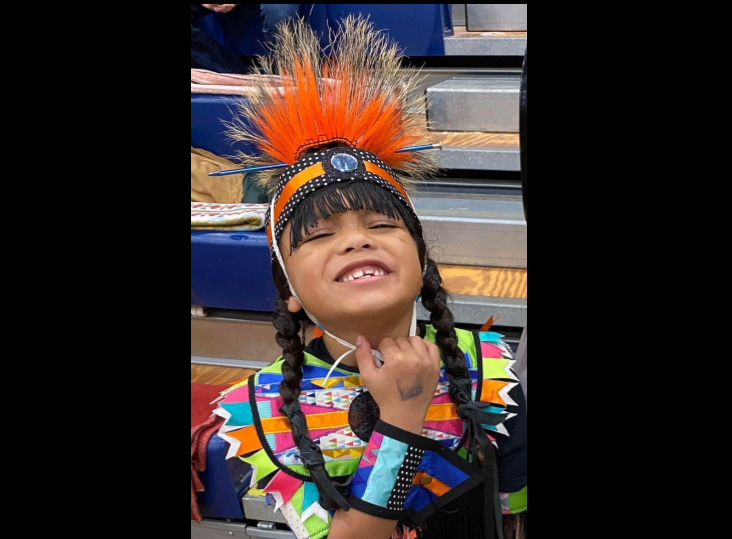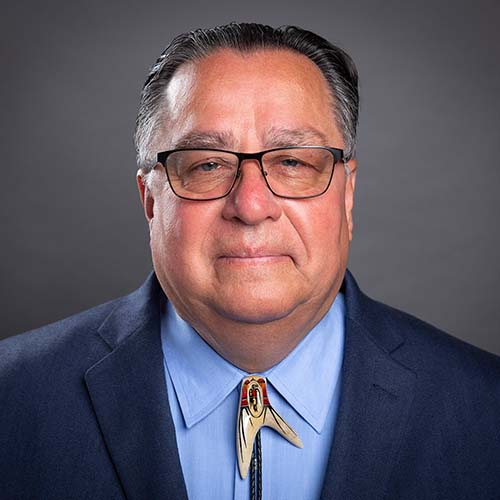
- Details
- By Levi Rickert
Opinion. The most-read story on Native News Online this National Native American Heritage Month has not been about celebrating Indigenous heritage but is about how one Lakota elder’s culture was stolen from him in a hospital bed by a pair of scissors.
The story started when Arthur Janis (Oglala Sioux Tribe), who resides on the Pine Ridge Indian Reservation, began experiencing severe abdominal pains in August. He went to a Rapid City hospital, where staff determined they couldn’t provide him with adequate medical attention. He was then flown via medical air transport to UC Health Hospital in Aurora, Colorado, some 375 miles–or a six-hour drive– from Pine Ridge.
While in UCHealth’s care, Arthur suffered a life-threatening heart attack and stroke. His family was told by hospital staff he likely had only two days to live.
Arthur pulled through but unfortunately lost the ability to speak and is currently in a diminished mental state that does not allow him to make his own medical decisions. Arthur was transferred to a nursing home that would provide him with long-term care.
During a video call to discuss his medical progress, Arthur’s sister noticed his waist-long hair was cut. Disturbed because of the traditional beliefs of the Lakota tied to hair, she called their brother Keith Janis. The hospital would not take responsibility for Arthur’s hair being cut and gave the family unsatisfactory responses about the incident.
On Saturday morning, Keith Janis spoke to me on the phone about the sacredness of traditional Lakota wearing their hair long. He says hair represents strength and connection to our ancestors.
“If you cut your hair, your soul and your spirit bleeds,” he said. “Your hair contains your memories and things that you grew up with…that your matriarch, your mom, and your aunties put into your hair. So, it contains all your memory, all your joy, your strength. In our culture, this is really important because we have this tradition, ceremonial tradition that goes with our secret tight keeping up the soul.”
Keith said in traditional Lakota beliefs, locks of hair of a deceased family member or friend are cut off and put in a bundle. The person who holds the bundle becomes the deceased spirit keeper. During a full year of mourning, the spirit keeper cannot sing or drum at powwows – or even attend powwows. A year after the passing of the loved one, a ceremonial feast is held where loved ones remember and reflect on the deceased. The spirit — held in the bundle of hair — is then released. The bundle is then given back to the earth by the spirit keeper.
Keith confirmed what I already knew: Lakota and other Native Americans consider hair sacred. That is why the Janis family is upset with the cutting of their brother Arthur’s hair. It was as if part of his culture–part of his spirit–was cut off with a pair of scissors.
On Friday, after a two-week public relations campaign stating the institution has “deep respect for our patients and their individual beliefs and customs,” UC Health Hospital finally admitted to Keith Janis that someone on its staff cut Arthur’s hair off to prevent him from getting bed sores. They did so while Arthur was in an incapacitated medical state and without his family’s permission.
In another story in Mission, Kansas, the American Civil Liberties Union (ACLU) on Friday sent a letter to Girard School District describing how an 8-year-old Native American boy was forced to cut his hair due to the school district's policy forbidding boys from having long hair. The school district maintains long hair on boys and violates state and federal laws.
November is indeed National Native American Heritage Month. It is a month to celebrate the Indigenous people of the country and their culture. It is a time to get past the fascination Americans have with the mythical Native Americans who fed the Pilgrims in the constructed first Thanksgiving. Instead, it is a time to learn about Native American culture and traditions and why they matter.
The story of what happened to Arthur Janis is a prime example of the importance of learning about each other’s cultural traditions and why they matter. Had the UC Health Hospital staff known, a great portion of Arthur’s spirit would not have been taken from him.
Thayék gde nwéndëmen - We are all related.
Help us ensure that the celebration of Native Heritage never stops by donating here.
More Stories Like This
Another Weapon of Mass DestructionColorado cannot heal until it confronts Sand Creek honestly
Native American Mothers Deserve to Live
Technology Rooted in Tradition is Strengthening Cherokee Nation
The Lumbee Tribe of North Carolina: #575
Help us defend tribal sovereignty.
At Native News Online, our mission is rooted in telling the stories that strengthen sovereignty and uplift Indigenous voices — not just at year’s end, but every single day.
Because of your generosity last year, we were able to keep our reporters on the ground in tribal communities, at national gatherings and in the halls of Congress — covering the issues that matter most to Indian Country: sovereignty, culture, education, health and economic opportunity.
That support sustained us through a tough year in 2025. Now, as we look to the year ahead, we need your help right now to ensure warrior journalism remains strong — reporting that defends tribal sovereignty, amplifies Native truth, and holds power accountable.
 The stakes couldn't be higher. Your support keeps Native voices heard, Native stories told and Native sovereignty defended.
The stakes couldn't be higher. Your support keeps Native voices heard, Native stories told and Native sovereignty defended.
Stand with Warrior Journalism today.
Levi Rickert (Potawatomi), Editor & Publisher

